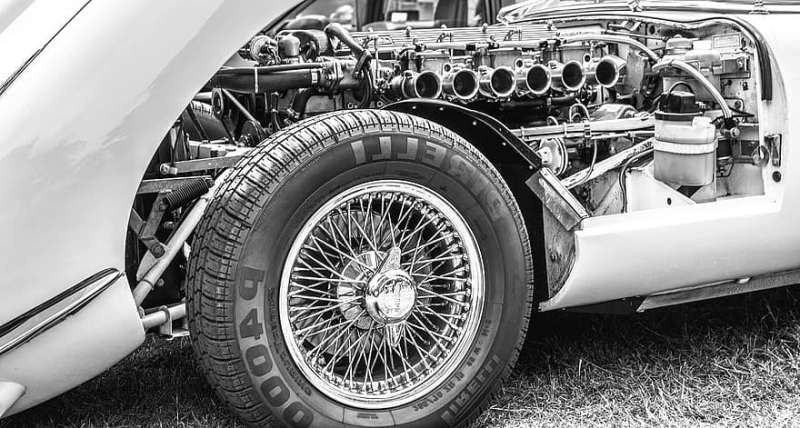Contents
– Principle of the ignition system
– What is ignition advance?
– How to obtain an ignition advance?
– Maintenance of the ignition timing system
The ignition advance is an essential parameter in the engine management of a vehicle. It is a significant factor in reducing fuel consumption, pollutant emissions, and engine efficiency. Let’s see closer below.
Principle of the ignition system
The ignition system is a device present on spark-ignition internal combustion engines, i.e., on gasoline engines. This type of engine, unlike the diesel engine, needs a spark to start its combustion. Let’s see closer below:
– An ignition coil creates a spark at the spark plug electrodes.
– The voltage generated is then approximately 25,000 V (up to 45,000 V) and theoretically occurs at the precise moment of the end of compression of the oxygen mixture of the air admitted + fuel.
– Combustion thus causes the piston to relax and the engine to run.
What is ignition advance?
Ignition advance: the principle
In practice, it is necessary to advance the production of the spark according to the following parameters:
– The speed of rotation of the engine is variable: the higher it is, the greater the angle of rotation of the engine for combustion and spark production. It is, therefore, necessary to delay the production of the spark.
– The engine load: this is the filling of the engine according to the driver’s needs. For example, the load will be low when going downhill (accelerator pedal at rest) and full when going uphill (accelerator pedal in maximum position). A low load implies little gas mixture admitted, thus difficult combustion conditions. It will then be essential to advance the production of the spark.
Example: Here are some numerical references: Combustion speed at 2,000 rpm = 2 ms (0.002 s). Spark speed = 1.3 to 2 ms. Number of sparks at 3,000 rpm (4-stroke / 4-cylinder engine) = 6,000 sparks/min.
The different types of ignition advance
We observe 3 types of ignition advance:
– The initial advance is a fixed minimum advance value necessary for idle operation. It varies according to the engine from 0 to 10° before TDC (top dead centre of the engine piston).
– Centrifugal advance is an ignition advance that differs proportionally from engine speed (from 0 to 40° before TDC).
– The advance linked to the engine load can vary from 0 to 20° before TDC.
These 3 values are combined to obtain the final ignition advance value.
Are you looking for a car mechanic?
How to obtain an ignition advance?

Ignition advance without electronic engine management
It concerns old vehicles equipped with mechanical systems, which have an igniter synchronized by pinion to the camshaft. The spark is produced by the mechanical breaking of contacts called breakers.
– The breakers are shifted from the igniter axis by rotating the igniter housing; this is the operation that consists of setting the initial advance using a strobe gun.
– The centrifugal curve, defined by the manufacturer, is refined by modifying the tension of the return springs of the weights inside the igniter.
– The advance curve linked to the load, also defined by the manufacturer, is obtained by adjusting a capsule connected to the engine vacuum.
The limit of this system, which has led to its disappearance, is that the fixed manual settings do not adapt well to real operating conditions. We observe the drift of the settings with the wear of the components which constitute the system.
Ignition advance with engine electronics
Today, all vehicles are equipped with this system; it is the electronic management of the ignition composed of:
– the TDC sensor, which indicates both the engine speed and the position of the reference cylinder;
– the air pressure sensor and the position of the accelerator pedal transmitting the engine load;
– the engine management computer which analyses the data and determines the exact point of ignition advance to be applied, according to a map preset by the manufacturer;
– the ignition coil controlled by the ECU, which creates the spark on the spark plug when its electrical supply is cut off by the ground;
– the knock sensor’s role is crucial because it allows an optimum adjustment of the ignition advance according to the real operating conditions. In an excessively high advance value event, a characteristic self-combustion noise, the knocking, is detected by this piezoelectric sensor. This information, processed by the computer, allows a progressive reduction of the advance in steps of 2° until the phenomenon disappears.
Maintenance of the ignition advance system
Adjustments are non-existent as the ignition timing system adapts in real-time to operating conditions.
The failures, infrequent, are electrical and can come from the various sensors, the ignition coil, the spark plugs, or the wiring harness. They are almost non-existent on the ECU itself and are detected by the engine management. The lighting of the diagnostic light will show up, and in such a case, you should take your car to a mechanic.


2 comments
[…] – What Is Ignition Advance System. […]
[…] What Is Ignition Advance System; […]